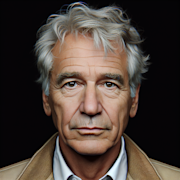The Day the Earth Stood Still (1951)

In 1951, a science fiction film was released that would go on to become a classic in the genre. “The Day the Earth Stood Still” captured the imaginations of audiences with its thought-provoking storyline and groundbreaking special effects. Let’s take a closer look at this iconic film and explore why it continues to resonate with viewers over half a century later.
Plot Overview
“The Day the Earth Stood Still” tells the story of an alien visitor named Klaatu who arrives on Earth with a powerful robot companion named Gort. Their mission is to deliver a stern warning to humanity: stop waging war and destroying the planet, or face dire consequences. As Klaatu attempts to navigate the complexities of human society, he forms a bond with a young boy named Bobby and a widowed mother named Helen. The film builds tension as the world’s leaders grapple with the implications of Klaatu’s message and the possibility of intergalactic conflict.
Themes and Messages
At its core, “The Day the Earth Stood Still” is a cautionary tale about the dangers of nuclear proliferation and the consequences of unchecked aggression. The film’s pacifist message is clear as Klaatu implores Earth’s inhabitants to seek peace and cooperation rather than resorting to violence. The character of Klaatu serves as a metaphor for the importance of understanding and empathy in resolving conflicts, highlighting the need for humanity to rise above its destructive tendencies.
Cultural Impact
Upon its release, “The Day the Earth Stood Still” was met with critical acclaim for its innovative storytelling and visual effects. The film’s atmospheric score, composed by Bernard Herrmann, added to the tension and drama of the narrative, enhancing the viewing experience for audiences. Over the years, the film has been recognized as a groundbreaking work that paved the way for future science fiction classics.
“The Day the Earth Stood Still” also influenced popular culture in significant ways. The iconic image of Gort, the towering robot enforcer, has become a symbol of alien technology and power in film and television. References to the film can be found in music, literature, and even politics, illustrating its enduring impact on the collective consciousness.
Legacy and Remakes
In the decades since its release, “The Day the Earth Stood Still” has been hailed as a timeless masterpiece that remains relevant in our modern world. The film’s themes of environmentalism and peaceful coexistence continue to resonate with audiences, prompting reflection on the state of our planet and our role in shaping its future. Several remakes and adaptations of the original film have been produced, but none have captured the same magic and resonance as the 1951 classic.
As we revisit “The Day the Earth Stood Still” and its enduring legacy, we are reminded of the power of cinema to provoke thought, inspire change, and challenge the status quo. The film’s timeless message of hope and redemption serves as a reminder that we hold the fate of our world in our hands, and that true progress can only be achieved through cooperation and understanding.
In conclusion, “The Day the Earth Stood Still” stands as a testament to the enduring power of science fiction to captivate and challenge audiences. Its message of peace and unity continues to resonate with viewers of all ages, reminding us of the importance of empathy and compassion in an ever-changing world. As we look to the future, we can draw inspiration from Klaatu and his mission to show that there is always hope for a better tomorrow.

Desmond van der Walt
Journalist
More From Classics Authority Movies

Movie
Birdman or (The Unexpected Virtue of Ignorance) (2014)

Movie
The Legacy of James Dean: The Rebel Without a Cause

Movie
The Thing (1982)

Movie
The African Queen (1951)

Movie
A Woman Under the Influence (1974)

Movie
Echoes of Eternity: Classic Films with Enduring Themes





